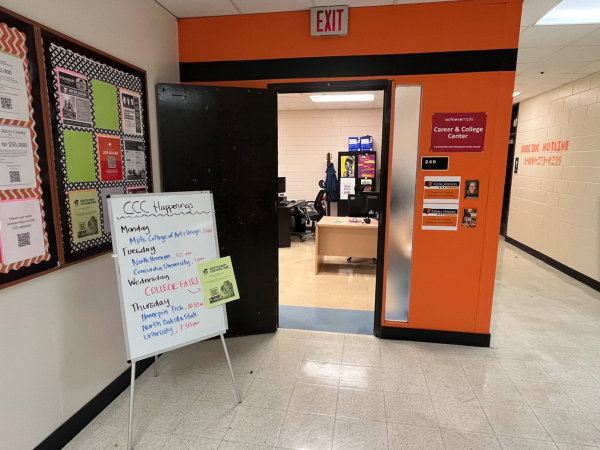Catholics feel conflicted over Archdiocese controversy
February 6, 2014
“I was shocked they produced a list,” stated teacher Beverly West (not her real name). Forced by Hon. John Van de North, a Ramsey County District Judge, the Archdiocese of Minnesota released a list of priests accused of sexual assault in December, 2013.
West believes the Catholic church, infamous for its sexual abuse cover ups, released this list as a reaction to public demand. “I don’t view this as a leadership decision, I feel like it was a reaction to public demand. I don’t credit our local church leadership with having the courage to put this in place, I think they are acting with demand.”
The list has taken almost a decade to make public. In 2004, the Archdiocese of Minnesota gave information to researchers at John Jay College of Criminal Justice about 33 priests accused of sexual abuse. As a response to the Charter for the Protection of Children and Young People created by the U.S. Conference of Catholic Bishops, the church wanted to find out the likelihood of priests of abusing minors in the United States. However, the study was anonymous. The list was requested again in 2009 during a lawsuit brought up by Jim Keenan, a victim of Rev. Thomas Adamson. Provided under seal, the list remained that way after Keenan’s case was thrown out.
“It’s really sad that there have been priests who have been doing all this stuff, it’s like they are abusing their status,” explained senior Christiana Martin, a practicing Catholic. “They are supposed to be helping the people get closer to God and it’s very sad that they are abusing their positions.”
Many cases don’t get reported until 10 years or more after the incident, limiting possible lawful punishment, and even then priests are rarely revealed.
While some priests are forced to resign because of accusations, the Church administration also has taken them out of one parish and sent them to another. Sending them to treatment is also common for the accused. The treatment involves one-on-one therapy, feminizing hormones along with sex addiction support groups. After evaluation, priests are sent back to their parish.
Francis Hoefgan, for example, was accused of molesting a minor in Coldwater Springs, Colorado, and was later sent to treatment in Maryland after the accusations. He was later released and reassigned to a parish in Minnesota and is being sued by one of his victims. The lawsuit also claims that Church Officials didn’t warn Hoefgan’s new parish about his past.
“If they had not covered up [clergy abuse] it might have just blown over as like a year long scandal,” sophomore Simon Henderson pointed out. Over the years the Catholic Church was covering up cases of sexual abuse and bishops even were paying off victims to keep allegations quiet.
“I can understand that people are angry at the church because it is terrible how they treated the victims [and] how they treated the offenders,” said Christian Pfeiffer, the director of the independent Criminality Research Institute of Lower Saxony and a former regional justice minister, in an interview with BBC about clergy abuse. However, many people have a different view on how the church is handling the cases.
“I think that the church is doing a good job remaining calm and over the years they are like ‘we will address this and we will investigate and priests will not be able to practice anymore.’ They have been addressing it and they have been doing that over the years,” Martin said
“I think they are doing okay but I feel like they could do better regarding the incidents,” sophomore Ashley Yang added.
Although the Archdioceses of Minnesota have made an “undeniably positive step forward toward transparency,” according to Jeff Anderson, a clergy abuse lawyer, people are still questioning and doubting how publicly the Archdiocese is dealing with the cases . “I kind of feel like they are trying to cover it up somehow.” Yang said.
While the dioceses across Minnesota are filing the lists of accused priests, Archbishop Nienstedt stepped out of the public eye while authorities looked into an accusation that Nienstedt touched a young parishioner inappropriately during their confirmation picture.
“I hope it’s not true” Martin said about the accusation. “He has been responsible. [He] addressed it and was like ‘I’m going to step aside for a little bit’, just like out of the public eye stuff so bishop Lee Piche is more in his place in public matters.”
The deadline to file the lists of accused priests was January 6, however has been been extended until February. The list included the priests’ names, birthdates, year of ordination, current residency, parish assignment history and current status. The accused have served in nearly half the parishes in Minnesota.












